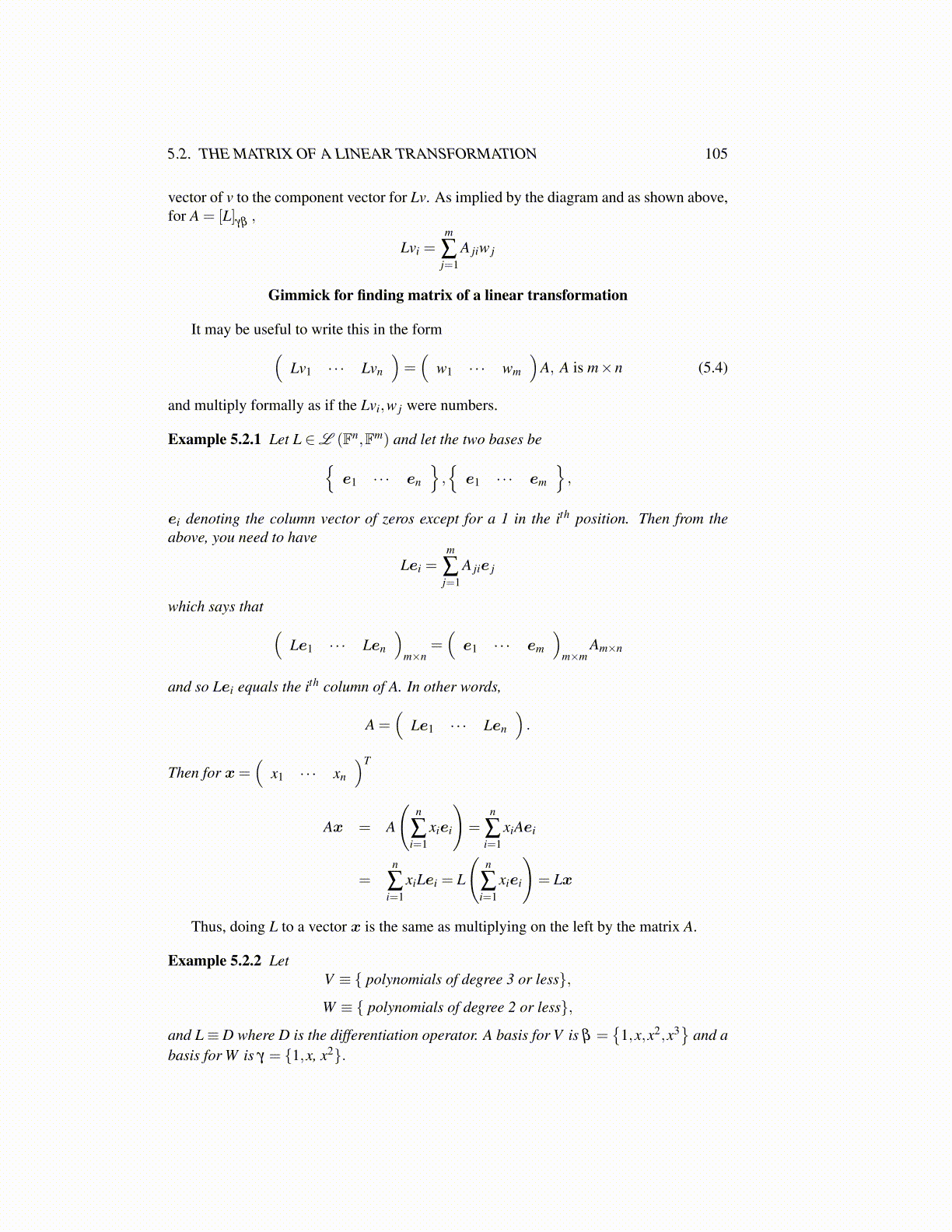
5.2. THE MATRIX OF A LINEAR TRANSFORMATION 105
vector of v to the component vector for Lv. As implied by the diagram and as shown above,for A = [L]
γβ,
Lvi =m
∑j=1
A jiw j
Gimmick for finding matrix of a linear transformation
It may be useful to write this in the form(Lv1 · · · Lvn
)=(
w1 · · · wm
)A, A is m×n (5.4)
and multiply formally as if the Lvi,w j were numbers.
Example 5.2.1 Let L ∈L (Fn,Fm) and let the two bases be{e1 · · · en
},{
e1 · · · em
},
ei denoting the column vector of zeros except for a 1 in the ith position. Then from theabove, you need to have
Lei =m
∑j=1
A jie j
which says that (Le1 · · · Len
)m×n
=(
e1 · · · em
)m×m
Am×n
and so Lei equals the ith column of A. In other words,
A =(
Le1 · · · Len
).
Then for x=(
x1 · · · xn
)T
Ax = A
(n
∑i=1
xiei
)=
n
∑i=1
xiAei
=n
∑i=1
xiLei = L
(n
∑i=1
xiei
)= Lx
Thus, doing L to a vector x is the same as multiplying on the left by the matrix A.
Example 5.2.2 LetV ≡ { polynomials of degree 3 or less},
W ≡ { polynomials of degree 2 or less},
and L≡ D where D is the differentiation operator. A basis for V is β ={
1,x,x2,x3}
and abasis for W is γ = {1,x, x2}.